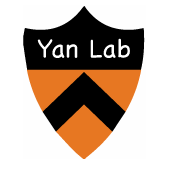Evolutionary mix-and-match with MFS transporters
Type
Major facilitator superfamily (MFS) transport proteins are ubiquitous in the membranes of all living cells, and ∼25% of prokaryotic membrane transport proteins belong to this superfamily. The MFS represents the largest and most diverse group of transporters and includes members that are clinically important. A wide range of substrates is transported in many instances actively by transduction of the energy stored in an H(+) electrochemical gradient into a concentration gradient of substrate. MFS transporters are characterized by a deep central hydrophilic cavity surrounded by 12 mostly irregular transmembrane helices. An alternating inverted triple-helix structural symmetry within the N- and C-terminal six-helix bundles suggests that the proteins arose by intragenic multiplication. However, despite similar features, MFS transporters share only weak sequence homology. Here, we show that rearrangement of the structural symmetry motifs in the Escherichia coli fucose permease (FucP) results in remarkable homology to lactose permease (LacY). The finding is supported by comparing the location of 34 point mutations in FucP to the location of mutants in LacY. Furthermore, in contrast to the conventional, linear sequence alignment, homologies between sugar- and H(+)-binding sites in the two proteins are observed. Thus, LacY and FucP likely evolved from primordial helix-triplets that formed functional transporters; however, the functional segments assembled in a different consecutive order. The idea suggests a simple, parsimonious chain of events that may have led to the enormous sequence diversity within the MFS.

